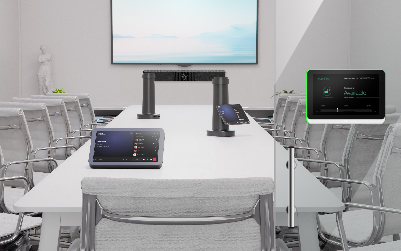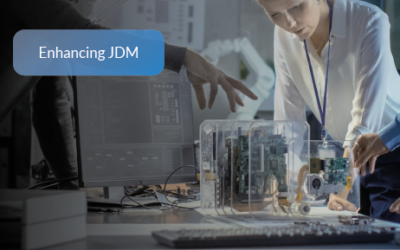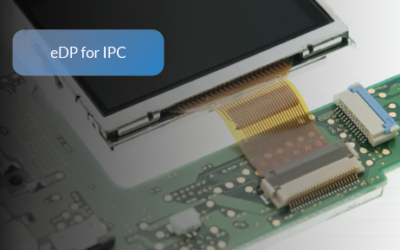
Best LCD Types for IPC: TN, IPS, and VA Compared
Industrial PCs are essential components in a range of industries, from manufacturing to healthcare. These computers are designed to withstand harsh environments and are equipped with advanced features for efficient and reliable operation. One of the most critical components of an industrial PC is the display. LCD displays are the most commonly used display technology in industrial PCs due to their durability, versatility, and cost-effectiveness. In this article, we will explore the three main types of LCD displays: TN, IPS, and VA, and their benefits for industrial PC applications.
Three Main Types of LCD Displays for Industrial PCs
TN (Twisted Nematic)
TN LCD displays are the most common and affordable type of LCD display technology used in industrial PCs. These displays are known for their fast response times, high refresh rates, and low power consumption. TN displays are also known for their narrow viewing angles and limited color accuracy, which may not be suitable for some industrial applications such as “digital signage kiosks,” “panel pcs“, and “touch screen displays.”
IPS (In-Plane Switching)
IPS LCD displays are known for their superior color accuracy and wide viewing angles. These displays provide consistent color reproduction, making them ideal for industrial applications that require accurate color representation, such as “Human-Machine Interface (HMI)” and “digital signage.” IPS displays also have a fast response time, making them suitable for applications that require real-time data. However, IPS displays consume more power than TN displays, making them less energy-efficient.
VA (Vertical Alignment)
VA LCD displays provide high contrast ratios and excellent color reproduction, making them ideal for applications that require high image quality, such as “graphic design” and “video editing.” VA displays also have wide viewing angles, making them suitable for industrial applications that require multiple viewers, such as “control rooms” and “monitoring systems.” However, VA displays have a slower response time compared to TN and IPS displays, making them unsuitable for real-time data applications.
Choosing the Right LCD Display Type for Your Industrial PC
When selecting an LCD display for your industrial PC, it’s important to consider the specific requirements of your application. Here are some factors to consider when selecting the right LCD display type for your industrial PC:
Application Requirements
Consider the specific needs of your application, such as color accuracy, response time, and viewing angles. For example, if you need accurate color representation for medical imaging, an IPS LCD display would be a suitable choice. On the other hand, if you require fast response times for real-time data applications, a TN LCD display may be the best option.
Environmental Conditions
Consider the environmental conditions in which the industrial PC will be used, such as temperature, humidity, and dust. For harsher environments, such as manufacturing plants, a ruggedized display may be required. Additionally, certain LCD display types may perform better in certain temperatures or humidity levels, so it’s important to choose a display that can withstand specific environmental conditions.
LCD Display Performance in Various Environmental Conditions:
| LCD Type | Temperature Range | Humidity Range | Performance |
|---|---|---|---|
| TN | 0°C to 50°C | 10% to 90% | Performs well in moderate temperatures and humidity levels. May experience image distortion in extreme conditions. |
| IPS | 0°C to 40°C | 10% to 85% | Performs well in moderate temperatures and humidity levels. May experience color shift and image retention in extreme conditions. |
| VA | 0°C to 50°C | 10% to 85% | Performs well in moderate temperatures and humidity levels. May experience image ghosting and color shift in extreme conditions. |
Power Consumption
Consider the power consumption of the LCD display and how it will impact the overall energy efficiency of the industrial PC. For example, if you need a display that is energy-efficient, a TN LCD display would be the best option due to its low power consumption. However, if color accuracy is a priority, an IPS LCD display may be necessary even if it consumes more power.
Cost
Consider the cost of the LCD display and how it fits into your overall budget. TN LCD displays are typically the most affordable option, while IPS and VA LCD displays can be more expensive due to their superior color accuracy and wider viewing angles. However, it’s important to weigh the benefits of a more expensive display against the specific needs of your application.
Comparison of LCD Display Types for Industrial PC Applications:
| LCD Type | Response Time | Refresh Rates | Power Consumption | Viewing Angles | Contrast Ratio | Color Accuracy | Device Types |
|---|---|---|---|---|---|---|---|
| TN | Fast | High | Low | Narrow | Moderate | Moderate | Panel PCs, Kiosks, Touch Screen Displays |
| IPS | Fast | High | High | Wide | High | Excellent | Digital Signage, Human-Machine Interface (HMI) Devices |
| VA | Slow | Moderate | Moderate | Wide | High | Excellent | Control Rooms, Video Walls, Facility Management Systems |
Conclusion
When it comes to LCD displays for industrial PCs, there are several factors to consider, including the specific requirements of your application, environmental conditions, power consumption, and cost. By understanding the benefits and limitations of TN, IPS, and VA LCD displays, you can select the right display technology that meets your industrial PC’s specific needs. At LV-Tron, we offer a range of industrial PCs with a variety of LCD display options to meet your unique application requirements, such as panel PCs, touchscreen displays, and digital signage kiosks. Contact us today to learn more about our products and how we can help with your industrial PC needs.
Primax and LV-Tron Announce Strategic Partnership to Revolutionize Smart Meeting Solutions
Primax Electronics and LV-Tron (a division of IAdea) have officially announced their strategic partnership to invest in and develop cutting-edge smart meeting solutions. This collaboration aims to position both companies as leaders in the smart meeting industry, with...
Understanding SCEP: Its Role in Android Security
Understanding SCEP: Its Role in Android Security Simple Certificate Enrollment Protocol (SCEP) plays a vital role in digital security. Within Android, SCEP has become an essential tool, simplifying the once complex process of certificate enrollment. This article...
802.1X over Ethernet: A Key Solution for a More Secure Network
802.1X over Ethernet: A Key Solution for a More Secure Network Introduction to 802.1X over Ethernet In an era where network security is paramount across various industries, understanding and implementing robust security measures is essential. Last time, we delved into...
IEEE 802.1X Explained: A Plainspeak Guide to Securing Your Network
IEEE 802.1X Explained: A Plainspeak Guide to Securing Your Network Introduction to 802.1X 802.1X (The "X" is typically capitalized) is a cornerstone of modern network security and one of the most widely adopted security measures today. Here's why: Popularity: 802.1X...
A Step-by-Step Guide to Understanding Hardened Android
A Step-by-Step Guide to Understanding Hardened Android Introduction to Hardened Android In the world of mobile operating systems, Android stands out for its open-source nature, which allows for extensive customization. However, this flexibility can sometimes lead to...
Revolutionizing Business Collaboration with LV-Tron’s Immersive Smart Conference Rooms
rRevolutionizing Business Collaboration with LV-Tron's Immersive Smart Conference Rooms Introduction: Unveiling the Power of Smart Conference Rooms In the dynamic landscape of the digital age, the traditional conference room has been transformed into a "smart...
Android vs Windows: A User’s Guide to Choosing the Right OS
Android vs Windows: A User's Guide to Choosing the Right OS Choosing the right operating system for industrial PCs is crucial. This article provides a comprehensive comparison between Android and Windows, focusing on CPU choices, memory usage, and storage usage....
Joint Development Manufacturing (JDM): The LV-Tron Advantage
Joint Development Manufacturing: The LV-Tron Advantage In the tech industry, Joint Development Manufacturing (JDM) is a game-changer. It offers numerous benefits such as cost savings, faster time to market, and access to specialized expertise. But at LV-Tron, we don't...
LVDS Made Simple: Quick Start Guide with Expert’s Tips
LVDS Made Simple: Quick Start Guide with Expert’s Tips Introduction to LVDS Welcome back to our Quick Start Guide series! We've previously explored the high-speed interfaces of MIPI and eDP, crucial in mobile devices and embedded systems respectively. Today, we’re...
eDP Made Simple: Quick Start Guide with Expert’s Tips
eDP Made Simple: Quick Start Guide with Expert’s Tips Introduction to eDP Welcome back to our Quick Start Guide series! In our previous installments, we delved into the world of MIPI, a high-speed interface crucial in mobile devices and small devices, and LVDS, ideal...
MIPI Made Simple: Quick Start Guide with Expert’s Tips
MIPI Made Simple: Quick Start Guide with Expert's Tips Introduction to MIPI Welcome to our Quick Start Guide series! In this first installment, we’re diving into the world of MIPI, or Mobile Industry Processor Interface. This high-speed interface is a key player in...
Conference Room Technology 2023: The Innovations You Can’t Ignore
Conference Room Technology 2023: The Innovations You Can't Ignore As we navigate the digital era, the landscape of conference room technology is evolving at an unprecedented pace. This rapid progression has ushered in a host of new software, integrations, and...
Overcoming Challenges in Shifting from Traditional to Hybrid Meetings
Overcoming Challenges in Shifting from Traditional to Hybrid Meetings The digital era has ushered in a new trend of hybrid meetings, which involve both internal employees and external teams from other companies. These meetings offer significant benefits, including...
Smart Meeting Room
The Essential Hardware for a Smart Meeting Room The Rising Trend of Smart Meetings: Embracing the Digital Era According to the 63rd International Meetings Statistics Report released by the Union of International Organizations (UIA) in 2022, the number of meetings is...
Understanding Android Industrial PCs: A Detailed Overview
Understanding Android Industrial Panel PCs: A Detailed Overview In the rapidly evolving world of industrial automation, Android Panel PCs have emerged as a game-changer. These powerful devices are transforming the way industries operate, offering unparalleled...















